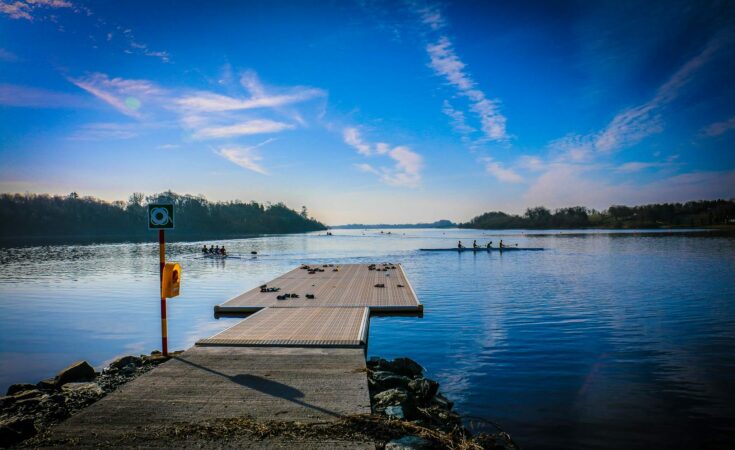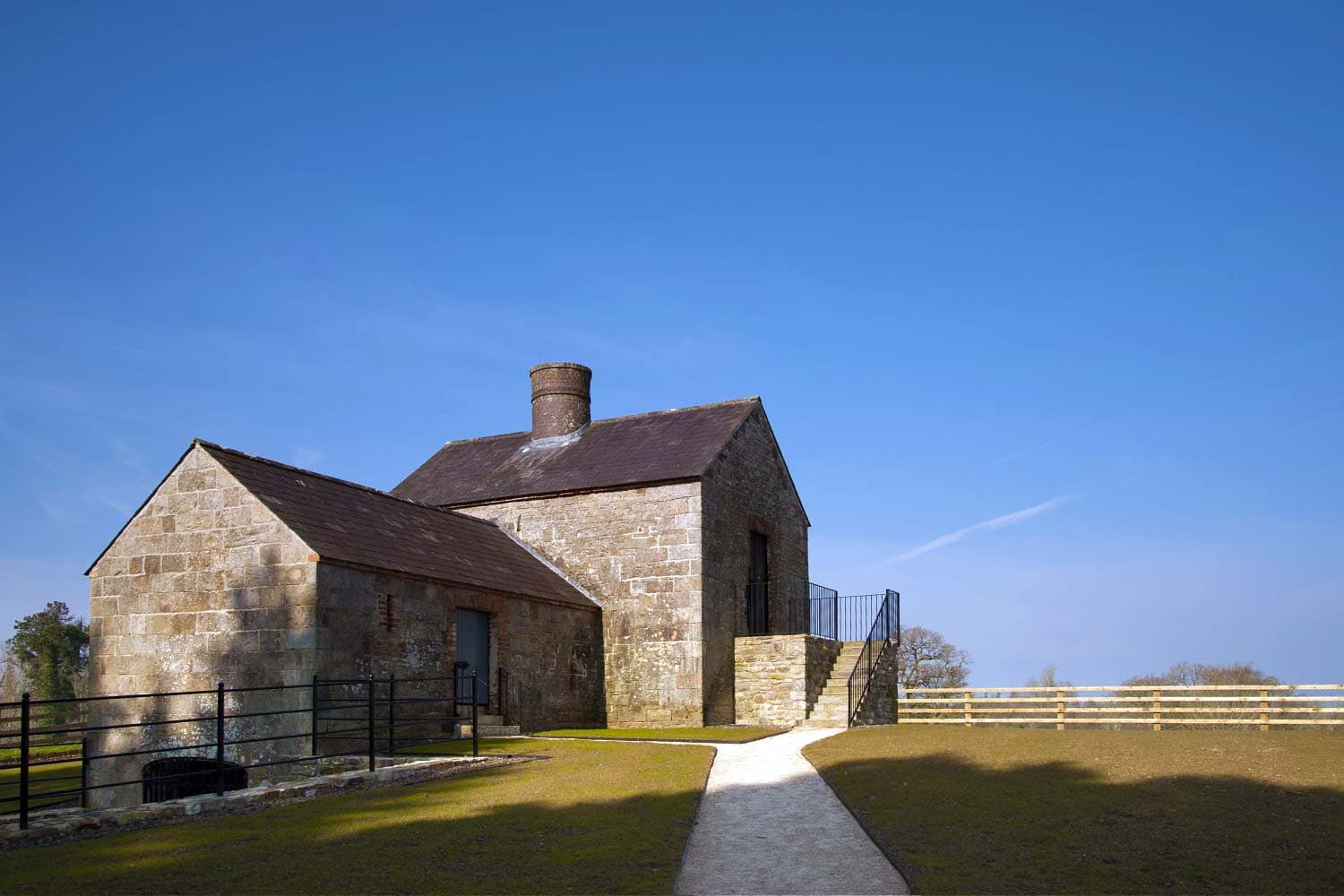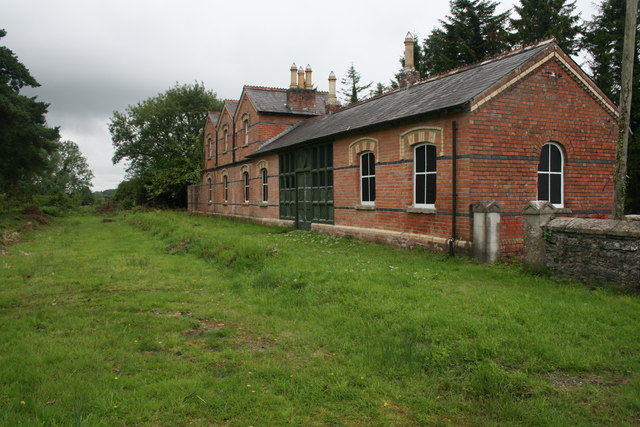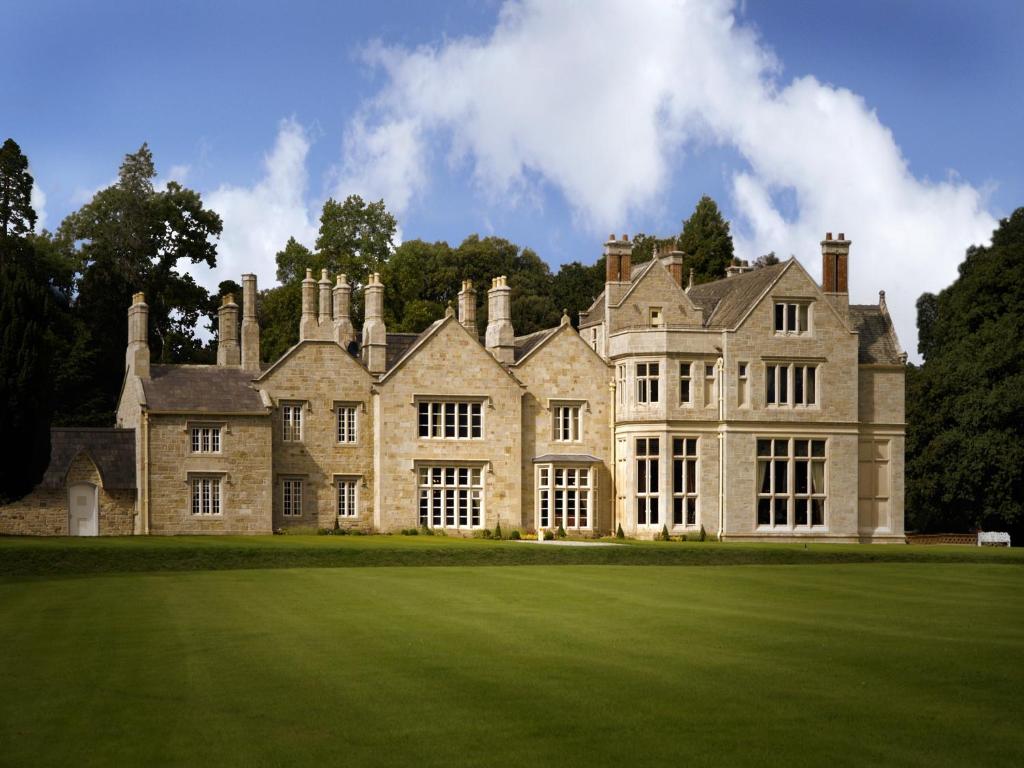Mohill brings you historic sites in abundance, some ancient and some part of our recent past. There are also new sites to visit and old places made new again. This country town holds much for you to discover and uncover, below is a brief glimpse at some of the Mohill places of interest that await you.

Lough Rynn Rowing Lanes
Lough Rinn is a natural lake on the outskirts of Mohill Town. It is patrolled by an elevated site on one side of the lake and the beautiful grounds of Lough Rynn Estate and Hotel with its walled gardens on the opposite side.
Lough Rinn is now home to a state of the art rowing facility developed by Leitrim County Council. The centre is a 2000 meter, eight lane facility capable of hosting nation and large scale international events.
With 2 pontoons, car and trailer parking and a service block with camper’s kitchen and office. The course is ideal for training, competitions, and regattas. It has hosted a Rowing Ireland led regatta in 2016 and 2017.
The setting, combined with the recently developed top class rowing facilities , places Lough Rinn firmly on the national and international map of rowing centres.
Lough Rynn Castle offers conveniently accessible self-catering cottages for groups interesting in using the facilities for training camps or competitions. These self catering cottages will sleep 5 persons.

Farnaught Lime Kiln
The kiln, which was originally built in the middle of the 19th century, was eventually shut down in the 1950s after approximately one hundred years of use. The facility was one of the last of its kind to function in Ireland when it was eventually closed.
Lime kilns were structures in which limestone was heated to a high temperature to produce quicklime, a substance of great importance to agricultural communities.
While work at the kiln was hard and risky, the lime produced helped to transform the surrounding landscape, making stony pasture and boggy ground into fertile fields for growth, pasture and tree plantations.
Quickime was also used as a mortar, whitewashing houses, disinfectant, pest repellent and even as a medicine.
The kiln produced quicklime that was used to produce materials for the construction and decoration of buildings throughout the Lough Rynn estate.
Kilns were once common features of rural landscapes throughout Ireland in the 18th, 19th and 20th centuries. But now most have been destroyed or have faded into the landscape, making restorations like the Farnaught Lime Kiln even more significant as a link to our history and foregone communities.
The kiln was carefully restored by local craftsmen and is one of the finest examples of a lime kiln in Ireland. Located on the Lough Rynn Estate, the Kiln is signposted from the hotel.

Narrow Gauge Railway Station
Mohill was an important intermediate station on the Cavan & Leitrim narrow gauge line, which ran from Dromod north to Ballinamore. Mohill railway station opened on 24 October 1887 and finally closed on 1 April 1959. It was a Class 2 station and had two timber platforms, with buildings on the down side.
To this day the Mohill Station remains largely intact. The large typical C&L brick station building, complete with original booking office doors survives intact, albeit derelict. On the up platform the corrugated iron waiting shelter also remains. At the north end of the station is the C&L small stone built goods shed.

Lough Rynn Castle and Estate
Found on the outskirts of Mohill Town, the stunning historic hotel estate covers three hundred acres with sprawling lawns, ancient trees, mature walled garden and lake shore scenery that is second to none. The magnificent Victorian manor is the the former ancestral home of the legendary Lord Leitrim and his family, the Clements
In 1749, a wealthy landowner named Nathaniel Clements purchased around 10,000 acres in the Mohill area. Upon doing so, his son Robert became the 1st Earl of Leitrim. On their new estate, the Clements family took up residence in a modest dwelling already on the grounds. However, they had their eyes on building a far more impressive residence worthy of their name and their stature – a magnificent castle.
By the start of the 19th century, work had begun on the Clements family’s new home under the watchful eyes of the Earl. Sometime in 1839, Robert Clements died both suddenly and young, which passed the management of the estate to his brother William Sydney Clements. Although Sydney worked with his brother managing the build of Lough Rynn, as a second son, he never expected to inherit the lands or titles. However, in 1854, that’s exactly what he did, taking full ownership of the estate on the death of his father, thus becoming the 3rd Earl of Leitrim or Lord Leitrim as he preferred.
To read more about the Clements, Lord Leitrim and The Lough Rynn Castle and Estate please visit: https://www.loughrynn.ie/history/
